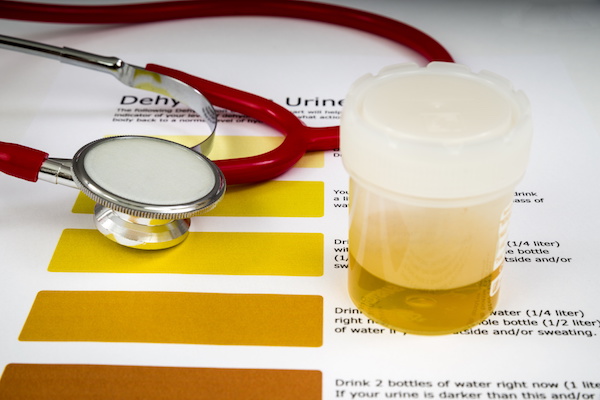The Colors of Urinary Trouble | Tennessee Valley Urology Center

When it comes to tracking urinary health, it’s actually a little easier to keep an eye on than some other body systems. That’s because the product of the urinary system—urine—provides a way to spot significant issues just based on its color.
While the hue of your urine is no substitute for medical evaluation if you think something is wrong, paying attention to it can give you a sign it’s time to talk to a doctor. That’s because it can serve as an indicator of issues that can otherwise present symptoms that aren’t always easy to spot.
The yellow color common to urine is created by the pigment urobilin, a normal product of digestion filtered by the kidneys and evacuated through the bladder. While most people already know the color can indicate hydration levels, they may not have a firm grasp on what’s normal and what variations can mean.
Urine Colors & What They Mean
First of all, let’s start with the ideal: A pale straw color, mostly clear with a slight tinge of yellow, indicates optimal hydration. If your urine is always clear, you may be drinking too much water and can probably step back your hydration, while a normal of bright to dark yellow may indicate you should get more water.
From that standard, variations can be noticeable. Some of them may not indicate trouble, since certain foods and drinks can tint urine.
For instance, a red tinge that only lasts a short time could be caused by eating beets or a large amount of berries, though if it’s accompanied by pain, that’s a good sign of an infection. Additionally, some medications may affect the color of urine.
Here are some of the urine colors and what they can indicate:
Red: As noted, when accompanied by pain, this can indicate a urinary tract infection. A long-term, dark-red color can indicate a hereditary blood cell disorder. It can also suggest prostate issues, tumors, cysts, and kidney or bladder stones. You should talk to a medical professional about red urine, particularly if you can’t attribute it to diet or medication.
Brown: This color can have similar causes to a red hue, but it can also suggest other conditions. Truly brown urine can indicate an issue with the body’s ability to process bilirubin, a product of the breakdown of hemoglobin. That can be caused by liver conditions such as hepatitis and cirrhosis, bile duct blockages, tumors and hemolytic anemia.
Orange: This one is typically caused by medications, including some laxatives and chemotherapy drugs, but it can also be a sign of a health issue. Those include jaundice, rhabdomyolysis, Gilbert’s syndrome, liver trouble, bile duct blockages and severe dehydration.
Green or Blue: For many people these hues can be as alarming as red, since they vary so significantly from normal urine colors. They can signal urinary tract infections and metabolic disorders that commonly show up in infancy. Additionally, several medications and food dyes can cause these colorations.
White or cloudy: Kidney stones and urinary tract infections can cause these because they create a massive flood of white blood cells to those areas.
If you have concerns about unusual urine colors or your doctor believes you need urologic care, the caring doctors at Tennessee Valley Urology Center are ready to help.
